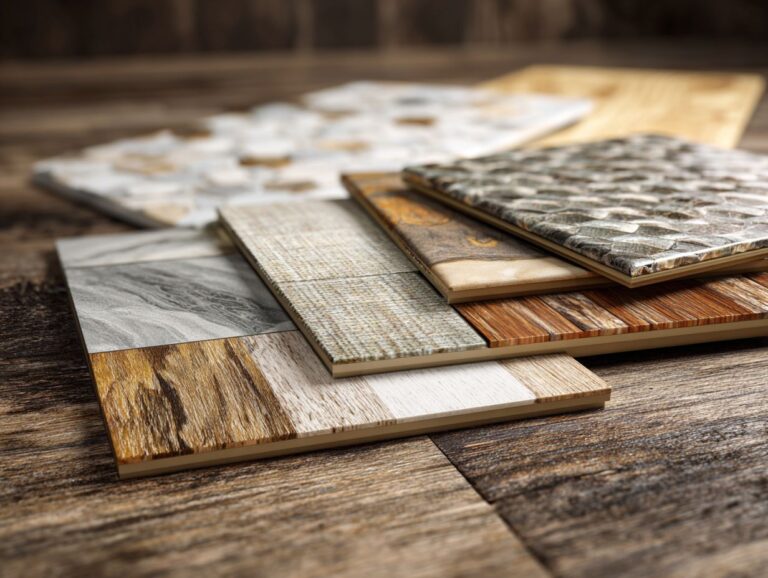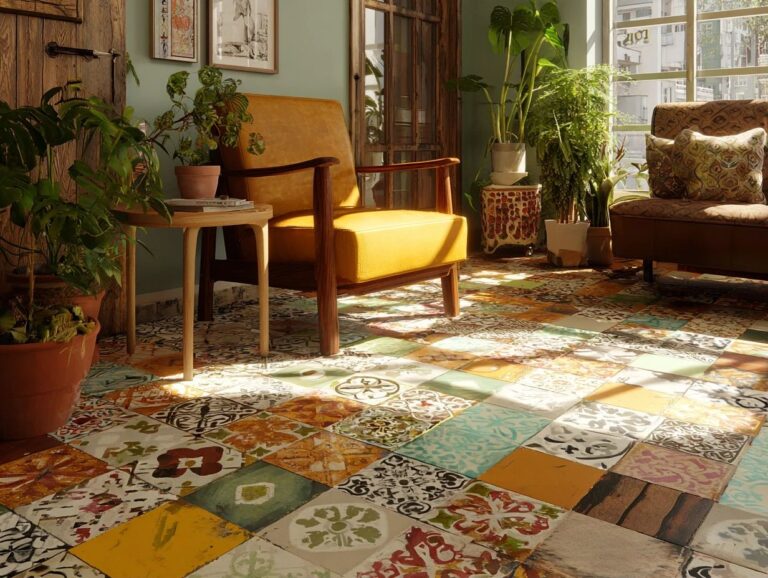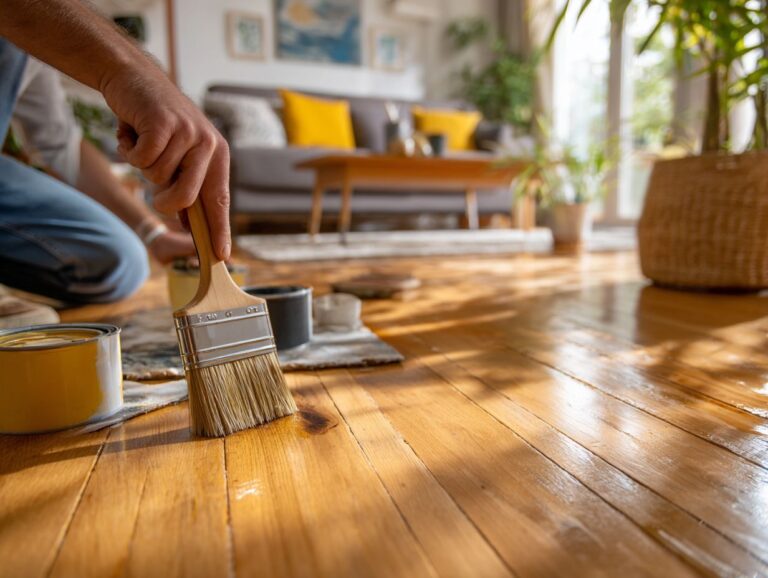Hidden Flooring Costs – What Quotes Don’t Include
Contents
- Introduction to Hidden Flooring Costs
- Common Hidden Costs in Flooring Projects
- Flooring Cost Breakdown 2024
- Additional Costs to Consider
- Regional Variations in Flooring Costs
- How to Get Accurate Quotes
- Strategies for Reducing Hidden Costs
- Frequently Asked Questions
- What are some hidden flooring costs that are not typically included in quotes?
- Do flooring quotes typically include the cost of materials?
- Are delivery and shipping fees usually included in flooring quotes?
- Do flooring quotes account for any additional labor costs?
- Are there any hidden fees or charges that I should look out for in flooring quotes?
- How can I make sure there are no surprise fees when buying new flooring?
Introduction to Hidden Flooring Costs

Key Takeaways:
Understanding Flooring Quotes
Flooring quotes often contain unclear language that can lead to misinterpretations and overlooked expenses, sometimes increasing total costs by up to 15%.
To avoid confusion, homeowners should focus on four key areas in quotes:
- scope of work
- materials specification
- payment terms
- warranty details
Make sure the scope clearly lists each task, such as removing old flooring or preparing the subfloor. For instance, you can explore detailed steps on removing different types of flooring in our guide on Furniture Dents in Flooring u2013 Removal Techniques. Check that materials are specified by grade and type, as this affects overall quality and longevity.
Pay special attention to payment terms to avoid unexpected charges. Confirm warranty details to understand coverage for installation defects.
Transparent quotes prevent unexpected costs, leading to improved project oversight.
Why Hidden Costs Matter
Recognizing hidden costs can save homeowners thousands, with the average flooring project exceeding initial estimates by 10-30% due to overlooked expenses.
Common hidden costs in flooring projects include:
- Subfloor repairs, which can add $1 to $3 per square foot
- Underlayment, typically costing $0.50 to $1 per square foot
Homeowners should also account for waste, often around 5-10% of material costs, and additional labor fees if old flooring requires removal. By budgeting for these aspects, a $3,000 project could easily escalate, pushing overall expenses to $4,000 or more.
To maintain accuracy, make a detailed list of possible costs before beginning the project and update it regularly as choices are made.
Common Hidden Costs in Flooring Projects
Flooring projects often have unexpected costs that can increase the total price and make budgeting more difficult.
Flooring Cost Breakdown 2024
Flooring Cost Breakdown 2024
Flooring Type Costs: Installed Cost Range
Flooring Type Costs: Room-Specific Costs
Flooring Type Costs: Additional Costs
The Flooring Cost Breakdown 2024 provides a detailed look at flooring costs, showing price differences for various materials, particular room installations, and extra service fees. This data offers important advice for homeowners and businesses planning flooring projects by pointing out cost factors and aiding in budget planning.
Flooring Type Costs delineates the installed cost range per square foot for various materials. Hardwood flooring $14.00Engineered wood flooring$13.50Vinyl flooring$5.00Luxury Vinyl Plank (LVP)$8.50Laminate flooringcarpet$6.75$7.25tilebamboo flooring$13.00cork flooring$10.50
- Room-Specific Costs: The cost analysis shows significant variance when installing flooring in different rooms. The living room $2,800Basement flooring$15,600Bedroomkitchen$2,000$1,650bathroom$500
- Additional Costs: Labor costs average $8.00 per square footFloor removal $900Subfloor repair$2.25
The Flooring Cost Breakdown 2024 explains the financial aspects of flooring projects, helping with making well-informed choices. Material costs vary widely, influenced by aesthetics, durability, and environmental factors, while room-specific costs reflect functional requirements. Extra expenses show that experienced workers and planning are needed for installations to go well. This detailed analysis helps with planning and budgeting for any flooring project.
Preparation and Subflooring Issues

Getting ready to install floors can reveal problems with the subfloor. Fixing these issues may cost an extra $500 to $2,000, based on how serious they are.
Common subflooring issues include moisture problems, which can lead to mold growth, and structural damage from pests or water intrusion.
When preparing, check for signs of warping or discoloration in the subfloor. For moisture, a simple moisture meter can help detect hidden issues, costing around $30.
If repairs are needed, replacing damaged sections of plywood can range from $100 to $350 per sheet, while extensive mold remediation might increase costs significantly.
Plan to deal with these problems early to avoid much higher costs later.
Underlayment Expenses
Underlayment is a critical component that can cost between $0.50 to $3 per square foot, depending on material quality and type.
Choosing the right underlayment directly affects the longevity and performance of your flooring. For hardwood, opt for cork or foam underlayment to reduce noise and improve insulation.
In contrast, laminate flooring benefits from a moisture barrier underlayment, which helps prevent warping. Spending a bit more on good underlayment can save you money on repairs and replacements over time because it makes your floor tougher against damage, improving its strength and comfort.
Installation Fees
Labor costs for installation can range from $1.50 to $6 per square foot, depending on the flooring type and local labor rates.
For flooring styles such as herringbone patterns, the installation costs are usually higher because they are complicated, sometimes costing more than $6 per square foot.
To keep costs manageable, obtain multiple quotes and compare labor rates in your region. Get ready to negotiate by pointing out better deals or choosing a simple design to make installation easier.
Consider hiring local contractors who may offer better rates over larger companies, as they often have lower overheads and more flexible pricing options.
Removal of Old Flooring
Removing existing flooring can incur costs between $1 to $3 per square foot, particularly if the old material is carpet or tile.
The removal process can vary significantly based on the material. For example, hardwood floors might cost between $2 to $4 per square foot due to additional labor and potential damage requiring repairs underneath.
In contrast, linoleum is typically easier to take out, usually staying within the $1 to $2 range.
To calculate costs accurately, consider the following:
- The total square footage
- Hire a professional for complex materials
- Always budget for unexpected expenses, potentially adding 10-20% of the total removal cost
Disposal Fees
Disposing of old flooring materials can add $200 to $500 to project costs, especially if hazardous materials like asbestos are involved.
Knowing local disposal rules is important. For instance, many jurisdictions require licensed professionals for hazardous waste removal, which can significantly increase costs.
To handle disposal easily, begin by looking up your local recycling centers to find their rules for wood, tile, or carpet. You might also consider scheduling a bulk pickup with your waste management service, often at a lower fee.
Researching options like donating usable materials to local charities can mitigate costs while promoting sustainability.
Additional Costs to Consider
Aside from the clear expenses, there can be extra costs in any flooring project that homeowners might not expect.
Materials and Quality Variations
Choosing between different flooring materials can lead to price fluctuations of 20-40%, depending on quality and style, like choosing vinyl over hardwood.
Vinyl flooring is a budget-friendly and water-resistant choice, usually costing between $2 and $5 per square foot. It’s popular with homeowners looking to save money.
In contrast, hardwood, while beautiful and durable, can cost anywhere from $5 to over $10 per square foot, reflecting its long-lasting nature.
Carpets serve as a mid-range choice, priced between $3 and $7 per square foot, combined with comfort but requiring more maintenance.
When prioritizing longevity and aesthetics, consider hardwood; for ease and cost, vinyl may be best.
Delivery Charges
Delivery charges for flooring materials can range from $50 to $200, adding to the overall project budget unexpectedly.
Different things can affect these costs. For instance, the distance from suppliers often plays a significant role; deliveries from distant warehouses can incur higher fees.
Larger orders typically lead to lower per-unit shipping charges, since many suppliers offer discounts for bulk purchases. To mitigate costs, negotiate with suppliers about their delivery fees, and consider utilizing local providers to reduce shipping distances.
Always request quotes from multiple suppliers to find the most competitive rates before finalizing your order.
Labor Rates and Overtime

Labor rates can vary significantly, with overtime fees pushing costs up by 50% or more if projects extend beyond the planned schedule.
To manage costs effectively, start by researching local labor rates in your region. Use resources like the Bureau of Labor Statistics or local trade associations for up-to-date information.
Next, establish a detailed project timeline with buffer periods to accommodate unexpected delays. Plan to do important tasks when there are fewer demands to make work time more efficient.
Communicate regularly with your team, encouraging proactive issue resolution to minimize potential overtime. This combined approach can help keep your project within budget and on schedule.
Finishing Touches and Accessories
Finishing touches, such as trim and moldings, can increase your project costs by an additional 10-15% if not factored in from the start.
Adding accessories to your budget is important for a complete and neat appearance. For instance, baseboards typically range from $1 to $5 per linear foot, while crown molding can cost between $2 and $8 per foot.
Adding door casing improves the look and costs around $2 to $4 per linear foot. When planning your budget, allocate funds for these items to avoid financial surprises.
Buying quality accessories can improve the look of your home and increase its worth, which is important in competitive markets.
Warranty and Maintenance Costs
Warranty and maintenance costs can add up to 2-5% of the overall project cost annually for routine upkeep and unexpected repairs.
Thinking about warranties when buying materials is important for managing expenses. For example, roofing materials may come with a 20-year warranty, reducing repair costs in case of defects.
Regular maintenance tasks such as cleaning gutters or inspecting for leaks add to long-term expenses. If a roof needs premature replacement, it could lead to significant costs-potentially climbing into the thousands.
Planning expenses for warranty problems and regular upkeep will help keep finances stable and reduce stress during the project.
Regional Variations in Flooring Costs
Flooring prices can change a lot depending on where you live. This is because of differences in local wages, how easy it is to get materials, and the rules for construction. To understand how these factors translate into actual costs, explore our Flooring Cost Per Square Foot – 2025 Pricing Guide which offers a detailed analysis.
Cost Differences by Location
Regions can see flooring project cost differences of up to 30%, depending on local market conditions and workforce availability.
For instance, in Kitchener, the average cost of laminate flooring installation might range from $3 to $5 per square foot, while in nearby Waterloo, homeowners might pay $4 to $6 for comparable services. Different factors like the need for experienced workers and the expense of living explain this difference.
Sourcing materials locally can influence pricing; local suppliers in Kitchener may offer promotions that aren’t available in Waterloo. Homeowners should compare quotes from multiple contractors in their area to achieve the best value.
Climate Impact on Flooring Choices
The climate of your region significantly influences flooring choices, with materials like tile and vinyl favored in humid areas to prevent moisture problems.
In dry regions, hardwood or bamboo floors are excellent due to their durability and aesthetic appeal, requiring minimal maintenance.
For colder climates, consider cork flooring, which provides insulation and is resistant to temperature fluctuations.
When choosing, assess factors like maintenance needs:
- Tile may need regular grout sealing,
- While vinyl just requires sweeping and occasional mopping.
Also, volume discounts from suppliers can ease costs, especially if renovating large spaces.
Knowing local conditions will help you choose the best flooring for lasting use and comfort.
How to Get Accurate Quotes
To get accurate quotes, ask specific questions and understand what needs to be included to avoid overlooking costs.
Questions to Ask Contractors
When hiring contractors, asking detailed questions can reveal possible additional expenses, helping to clarify the project’s budget.
To facilitate this, homeowners should ask contractors the following key questions:
- What type of warranty do you offer on your work?
- Can you provide a detailed breakdown of the materials and their costs?
- Are there any potential extra charges that may arise during the project, such as for unforeseen repairs?
- How do you handle project delays or changes?
These questions clarify what you expect and help you compare different contractors to find the right one for your needs.
Comparing Multiple Estimates

Looking at different estimates can show differences and help find the most affordable and thorough choices available.
To effectively compare estimates, create a side-by-side comparison table with key elements such as square footage, material costs, labor rates, and warranties.
For example, if you receive estimates A, B, and C, list items like:
| Estimate | Square Footage | Material Cost | Labor Rate | Warranty |
|---|---|---|---|---|
| A | 1,200 sqft | $15,000 | $30/hr | 5 years |
| B | 1,150 sqft | $14,800 | $32/hr | 3 years |
| C | 1,250 sqft | $15,500 | $28/hr | 10 years |
This approach highlights strengths and weaknesses, helping you make an informed decision.
Strategies for Reducing Hidden Costs
Using careful planning can greatly lower unexpected expenses in flooring projects, keeping you on budget and preventing financial surprises.
Budgeting for Unexpected Expenses
Setting aside 10-20% of your total budget for unexpected expenses can safeguard against common hidden costs in flooring projects.
These unexpected costs can arise from various sources, including subfloor repairs, unexpected material shortages, or higher than anticipated labor rates.
For example, if your flooring project budget is $5,000, setting aside $500 to $1,000 can cover problems like mold under the current flooring or damage found in the subfloor.
To manage possible expenses, try budgeting tools such as Floorzap to record costs, or ZapEstimator for exact estimates.
This active method reduces stress and keeps you ready for unexpected events.
Choosing the Right Flooring Material
Choosing the right flooring can save money over time. Options include affordable laminate and luxury hardwood, each with specific upkeep requirements.
Hardwood floors, while beautiful and durable, require periodic refinishing and can be prone to scratches. Unlike other materials, laminate stands up well to wear and moisture, which makes it great for busy areas, but it can’t be refinished.
When considering your long-term budget, factor in maintenance costs like cleaning supplies and professional services. For example, a high-quality laminate may cost less upfront and save you on upkeep, whereas budgeting for ongoing hardwood maintenance might reveal a need for larger long-term investment.
By examining these factors, you can select a flooring choice that fits your budget plan.
Frequently Asked Questions
Some hidden flooring costs that are not typically included in quotes include disposal fees for old flooring, floor prep work, and installation of any necessary subfloors or underlayment.
Do flooring quotes typically include the cost of materials?
Yes, most flooring quotes will include the cost of materials such as the flooring itself, adhesives, and trim. Check with the contractor to prevent unexpected issues.
Are delivery and shipping fees usually included in flooring quotes?
No, delivery and shipping fees are not usually included in flooring quotes. These fees can vary depending on the size and weight of the materials, as well as the distance they need to be transported.
Do flooring quotes account for any additional labor costs?
Some flooring quotes may include the cost of installation labor, but this is not always the case. It’s important to clarify with the contractor if their quote includes labor costs or if those will be billed separately.
Yes, there may be additional fees or charges in flooring quotes that are not explicitly stated. These could include fees for moving furniture, removing old flooring, or unexpected repairs. It’s important to review the quote carefully and ask the contractor about any potential hidden costs.
How can I make sure there are no surprise fees when buying new flooring?
To avoid any unexpected hidden costs when getting new flooring, it’s important to thoroughly discuss your project with the contractor and ask for a detailed breakdown of all costs involved. You should also ask for a written contract that outlines the agreed upon price and any potential additional fees. Finally, be sure to read the fine print and ask questions if anything is unclear.




